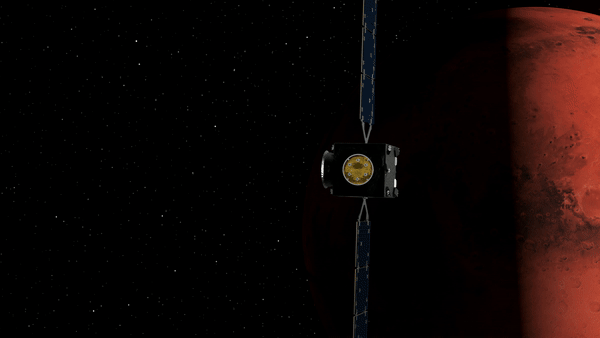Accept all cookies Accept only essential cookies See our Cookie Notice

About ESA
The European Space Agency (ESA) is Europe’s gateway to space. Its mission is to shape the development of Europe’s space capability and ensure that investment in space continues to deliver benefits to the citizens of Europe and the world.
Highlights
ESA - United space in Europe
This is ESA ESA facts Member States & Cooperating States Funding Director General Top management For Member State Delegations European vision European Space Policy ESA & EU Responsibility & Sustainability Annual Report Calendar of meetings Corporate newsEstablishments & sites
ESA Headquarters ESA ESTEC ESA ESOC ESA ESRIN ESA EAC ESA ESAC Europe's Spaceport ESA ESEC ESA ECSAT Brussels Office Washington OfficeWorking with ESA
Business with ESA ESA Commercialisation Gateway Law at ESA Careers Cyber resilience at ESA IT at ESA Newsroom Partnerships Merchandising Licence Education Open Space Innovation Platform Integrity and Reporting Administrative Tribunal Health and SafetyMore about ESA
History ESA Historical Archives Exhibitions Publications Art & Culture ESA Merchandise Kids Diversity ESA Brand Centre ESA ChampionsLatest
Space in Member States
Find out more about space activities in our 23 Member States, and understand how ESA works together with their national agencies, institutions and organisations.
Science & Exploration
Exploring our Solar System and unlocking the secrets of the Universe
Go to topicAstronauts
Missions
Juice Euclid Webb Solar Orbiter BepiColombo Gaia ExoMars Cheops Exoplanet missions More missionsActivities
International Space Station Orion service module Gateway Concordia Caves & Pangaea BenefitsLatest
Space Safety
Protecting life and infrastructure on Earth and in orbit
Go to topicAsteroids
Asteroids and Planetary Defence Asteroid danger explained Flyeye telescope: asteroid detection Hera mission: asteroid deflection Near-Earth Object Coordination CentreSpace junk
About space debris Space debris by the numbers Space Environment Report In space refuelling, refurbishing and removingSafety from space
Clean Space ecodesign Zero Debris Technologies Space for Earth Supporting Sustainable DevelopmentLatest
Applications
Using space to benefit citizens and meet future challenges on Earth
Go to topicObserving the Earth
Observing the Earth Future EO Copernicus Meteorology Space for our climate Satellite missionsCommercialisation
ESA Commercialisation Gateway Open Space Innovation Platform Business Incubation ESA Space SolutionsLatest
Enabling & Support
Making space accessible and developing the technologies for the future
Go to topicBuilding missions
Space Engineering and Technology Test centre Laboratories Concurrent Design Facility Preparing for the future Shaping the Future Discovery and Preparation Advanced Concepts TeamSpace transportation
Space Transportation Ariane Vega Space Rider Future space transportation Boost! Europe's Spaceport Launches from Europe's Spaceport from 2012Latest

SpaceCase SCX-01 top
Thank you for liking
You have already liked this page, you can only like it once!
SpaceCase SC-X01 flight model seen from above.
SpaceCase SC-X01 is built by ArianeGroup, the same company behind the Ariane 6 rocket that will launch it into space. Staying attached to the rocket’s upper stage for the most part of its three-hour mission, SpaceCase will detach just minutes before the upper stage deorbits and head for a fiery controlled destruction in Earth’s atmosphere.
Whereas the upper stage is designed to burn up harmlessly, SpaceCase SC-X01 is going to show off the opposite side of human engineering: survive the intense heat that builds up as spacecraft return to Earth at speeds of 28 000 km/h.
Most spacecraft designed to return to Earth use ablative materials – as the outer layer heats up it will burn off and be whisked away, taking the heat build-up away with it, and on to the next layer until splashdown.
SpaceCase SCX-01 uses the same principle but its unique selling point is that its heat-protective shield -- made of carbon resin called NAXECO® / resin – is also the structure. Whereas most spacecraft heat shields are glued or bolted on to the spacecraft structure, often in tiles, SpaceCase SCX-01’s monolithic heatshield is the structure of the capsule itself. This has many benefits from weight to simplicity and cost.
To keep costs and production time low, SpaceCase is simple by design. The innovations in this demonstrator include the shape of the capsule that could be used for a sample return from space or another planet – it will orient itself with the heatshield pointing down due to its aerodynamic shape to prove the design and test the material.
Inside SpaceCase SC-X01, avionics will be recording heatshield temperatures and trajectory data and send it to the project team via satellite. There are no parachutes on and no intention to recover the hardware – that will be for a second mission. The team plans to use plug-and-play standard dimension CubeSats inside the vehicle on next tests in the future.
-
CREDIT
ArianeGroup -
LICENCE
ESA Standard Licence

SpaceCase SCX-01

SpaceCase SCX-01 top

Hoisting SpaceCase SCX-01

SpaceCase SCX-01 team photo















 Germany
Germany
 Austria
Austria
 Belgium
Belgium
 Denmark
Denmark
 Spain
Spain
 Estonia
Estonia
 Finland
Finland
 France
France
 Greece
Greece
 Hungary
Hungary
 Ireland
Ireland
 Italy
Italy
 Luxembourg
Luxembourg
 Norway
Norway
 The Netherlands
The Netherlands
 Poland
Poland
 Portugal
Portugal
 Czechia
Czechia
 Romania
Romania
 United Kingdom
United Kingdom
 Slovenia
Slovenia
 Sweden
Sweden
 Switzerland
Switzerland
























